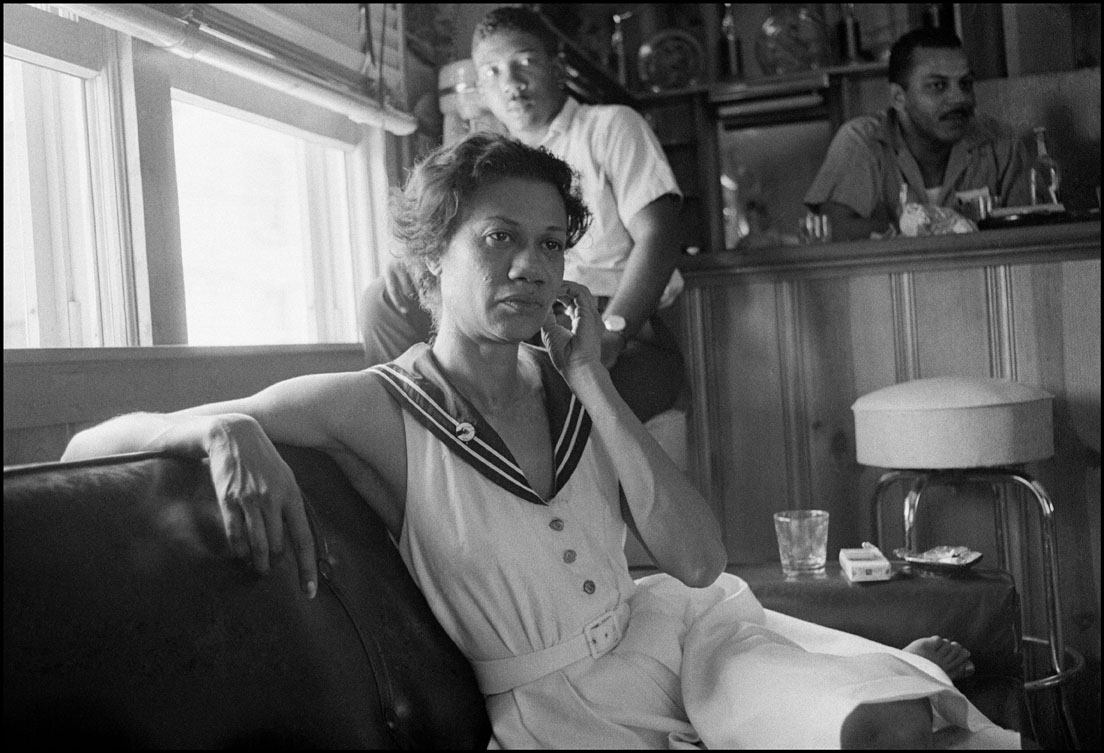Written by Prof. Angela Chamblee
Gloria Richardson, Part 1
She looked at the soldier with a mixture of anger, surprise, and defiance. She shoved the bayonet out of her way and kept on walking. The photograph became an iconic Civil Rights pict. It was defiant, yet peaceful. She was a brave, non-violent, peaceful warrior. Gloria Richardson: May 6, 1922 – July 15, 2021.
Gloria St. Clair Hayes Richardson was born to an upper middle class family of Race men and women who fought racial oppression. Before that, her ancestors had been free Blacks living in Maryland, a slave state. In 1961, her eldest daughter, Donna, was in high school, when she decided to become a member of the Student Non-violent Coordinating Committee (SNCC). Gloria Richardson joined SNCC to help her daughter out, and she wanted to watch out for her. She was also concerned because of increasing police brutality against Black high school children.
Richardson rose fast up the chain of command to be in charge of the Cambridge Non-violent Action Committee (CNAC). CNAC was different from most other SNCC organizations because it was the only one run by someone who was a parent and a woman.
Richardson was not only a peaceful warrior, but someone who liked Malcolm X’s ideas. A lot of people died driving down route 40 on the way from marches, driving back to Cambridge, Maryland. She told her followers that when coming back from a March, it was their business whether they carried guns to protect themselves.
In the 1950’s people learned from watching news footage of White people sicking dogs on Blacks, spitting in Black and White faces, calling people “N- – – – r” to the face that it was not good publicity for White people, so Whites changed up their program. During the day people would be polite and respectful, but after sundown all “H” would break loose. Yes, Black folks in Maryland started carrying guns too, but they still took an oath to “turn the other cheek” when they participated in non-violent, peaceful protest marches.
They rehearsed the march, taking turns, having march participants curse them out and do everything they could to upset them. If they found that they might not be able to be non-violent peaceful protesters, they were asked not to come to the March. They were told that the best way they could help was to stay at home during the march. A few times Gloria Richardson even took herself out of a march.
In Maryland, CNAC had a plan to boycott businesses that catered to segregation. After about two years of boycotting and marching, they had succeeded in breaking the economic back of Cambridge. The White leadership, was willing to give into the demands of CNAC. President John F. Kennedy and Attorney General Robert F. Kennedy called a meeting of the White leaders of Cambridge, Maryland and CNAC to negotiate an end to the boycott. The Kennedy brothers gave in to almost all of the demands of CNAC.
All of SNCC and all of Black America was looking because neither Martin Luther King, Jr. nor the NAACP had ever gotten so much as Gloria Richardson and CNAC. President Kennedy asked that the people of Cambridge vote on whether segregation should be done away with. Kennedy believed there were enough votes to win an election, but Richardson said at the time: “ A first-class citizen does not have to beg for freedom. A first-class citizen does not plead to the white power structure to give him something that the whites have no power to give or take away. Human rights are human rights, not white rights!”
She told Black people to boycott the election, so many Blacks did not vote and the referendum did not pass. Gloria Richardson said that if the referendum had passed the White leaders in Dorchester County Maryland would have launched a lawsuit to get rid of the referendum. Cambridge, Maryland is in Dorchester County, Maryland. As soon as White leaders agreed to do away with segregation, they immediately began to back away from the decision, and White leaders were already trying to renege on their promise to get rid of segregation. History shows that White people speak with forked tongues , when they made treaties with Native American people.
Moreover, President Kennedy was angry at Gloria Richardson. Martin Luther King, Jr. was angry with Richardson.The NAACP was angry with Richardson. Richardson received numerous death threats. Only Martin Luther King, Jr. received more death threats. In August of 1963, King led “The March on Washington for Jobs and Freedom. “ In November of 1963, President Kennedy was assassinated.
The new President, Lyndon Baines Johnson, however, found a way to get rid of segregation and Jim Crow laws: The Civil Rights Act of 1964. He signed a bill making segregation illegal in all of the United States.
At this point Gloria Richardson who had long ago divorced her first husband, got married to Frank Dandridge, a photographer for Life magazine. Then, she resigned from her position at CNAC. She, her youngest child, Tamara, and Frank Dandridge then moved to New York. In New York she got a job working for the New York Department of Aging. Her job was to make sure that businesses were in compliance with the laws of New York, regarding how elderly people should be treated. She retired from her job at age 90. She never went back to live in Cambridge, MD again. She died at age 99. She was still feisty. She was still an activist, only she fought in a different way. She was not sick. She died in her sleep.
Works Cited
Alexander, Keith L. “Gloria Richardson pushed aside a bayonet as a 60’s
Civil Rights Activist. Now at 98,she wants the new generation to fight on.”
Washington Post.https://WashingtonPost.com/ local/ Gloria-Richardson-
civil-rights-BLM/2020/12/10/19. Accessed Sept. 2021.
Admin. Cambridge, MD. 1963: When the Civil Rights Movement Hit Back.” July
3, 2014. Liberationschool.org. Accessed Sept.23, 2021.
“Gloria Richardson.” snccdigital.org. Snccdigital.org/people/Gloria-Richardson/
Accessed Sept. 23, 2021.
“ July, 1963: Treaty of Cambridge.” Snccdigital.org. Accessed, Sept 23,2021.









